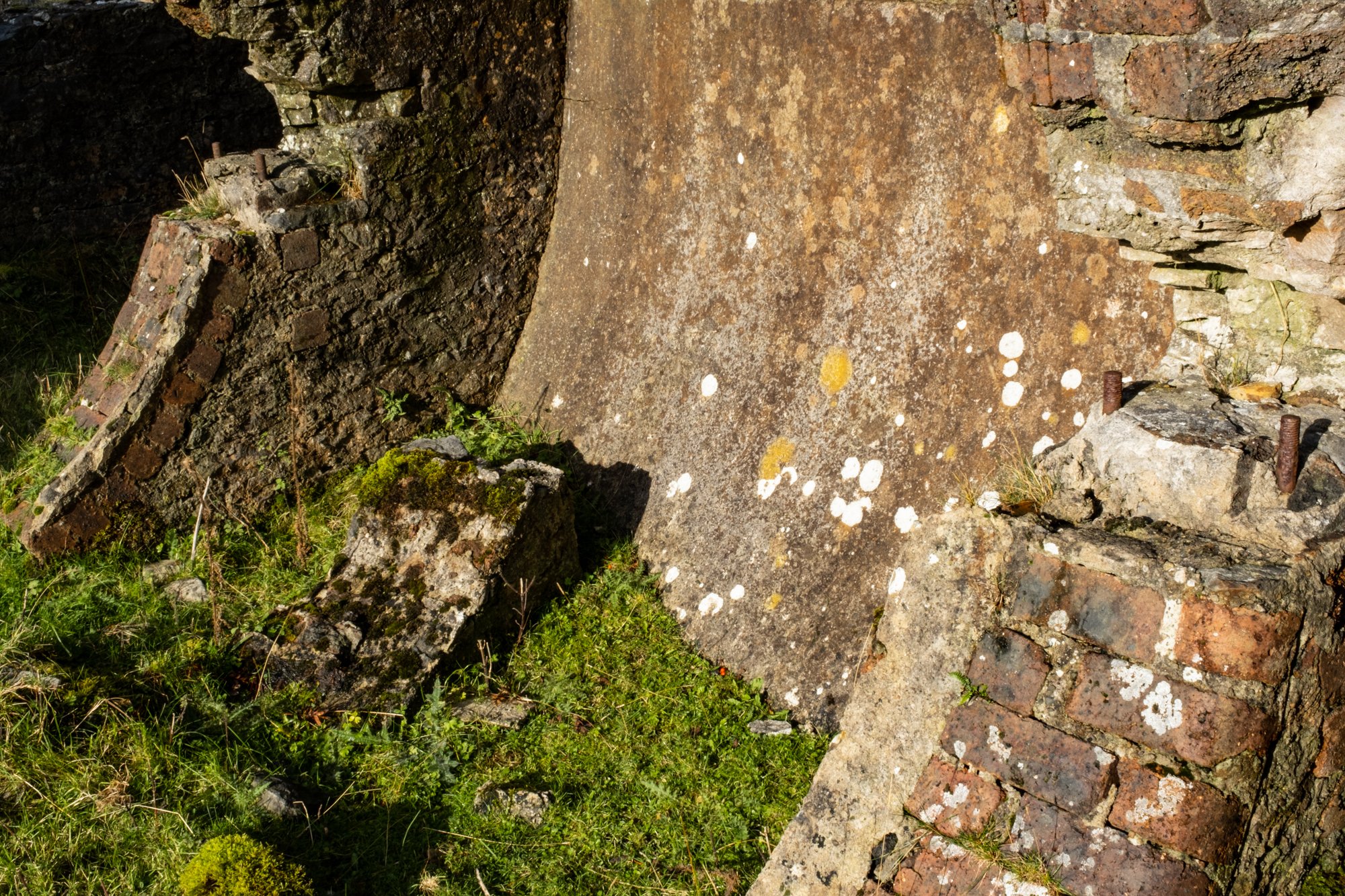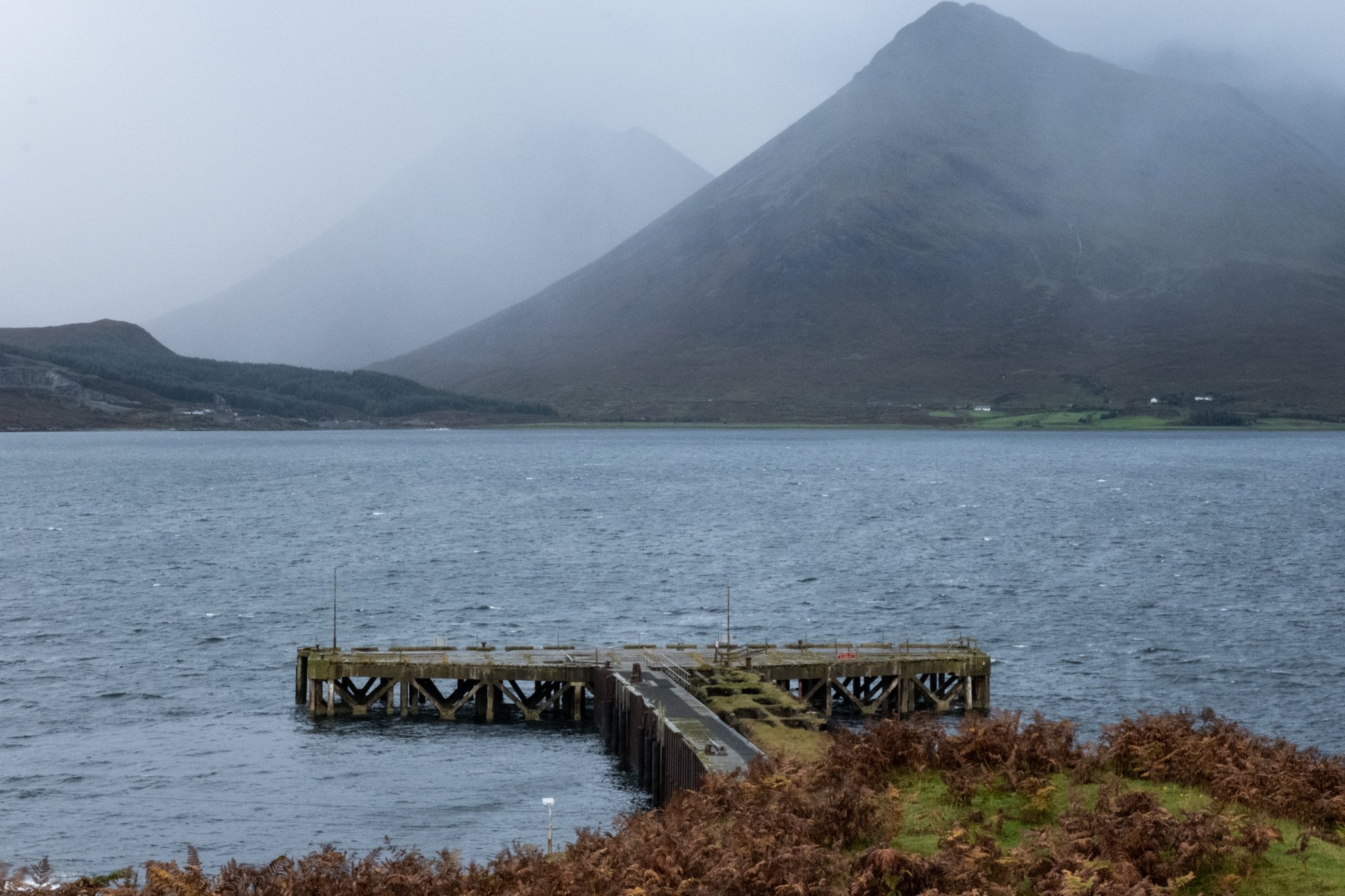The beautiful Inner Hebridean island of Raasay lies between Skye and the Scottish mainland. It seems an unlikely place to have an industrial history of mining and yet iron-ore mining started here in 1912 and played an important role during WW1. Some might consider the ruined buildings associated with this activity to be the proverbial ‘blot on the landscape’, yet they are strangely fascinating and thankfully dwarfed by the grand views especially to Skye.
During the submarine campaign of 1916, importing iron-ore for making munitions was both difficult and dangerous. Ironically, just as attention was turned to home sources of ore to meet the demand, the Raasay mine lost most of its workforce to war service. The mining company, William Baird & Co., offered to expand operations at Raasay and agreed for the mine be taken over by the Ministry of Munitions of War with the manpower problem solved by the controversial use of prisoners of war. The agreement ended in 1919 and although the site was maintained in working order for a while, its ore was never required again, even in WW2, after which it was dismantled and the remains left to deteriorate.
Access to the actual mines is no longer possible, but at Mine 1 the ruins of the ‘compressor house’, the ‘checkers office’ and the ‘weighbridge’ are still visible, now overshadowed by trees and overgrown with heather.
On the hill above, near the entrance to Mine 1, the remains of the ‘fan house’ still stand, with its curved walls of stone and concrete and the brick lined air intake. The housing can still be seen for a powerful 70-inch mine fan (no longer in place) which provided the ventilation for the roughly 8km of underground tunnels.
A second mine was little used as geological fault lines were discovered and its fan house is the also the main surviving structure, even as it is rapidly disappearing beneath a roof of foliage and young trees growing up through its ruins.
Perhaps the most impressive remains are above the pier at Suishnish, from which the finished ore was loaded directly onto ships taking it to the mainland. Looking back up the hill from the pier, the enormous hopper yawns open to the elements. Where once the finished ore was held before loading, now only bricks from the dismantled kilns and other structures lie abandoned as a turf of green gradually engulfs them. Huge concrete bastions march up the hill through the bracken; once they bore a gantry system bringing ore from the ‘crusher house’ above. There it had been mixed with coal and crushed to a smaller size before sending it along the gantry system and delivered to the top of the kilns.
Originally only 2 kilns were built side by side although another 3 were constructed later. All were built to the same design, with circular towers over 20m high and lined with a 0.45m thick layer of yellow ‘Morningside’ firebricks. Today only their bases remain, resembling a row of crofts or small cottages. With the outer cladding removed the interiors are linked as if by a continuous tunnel scattered with broken bricks. The purpose of heating the ore was to drive off water and certain minerals in the ironstone, in this case calcite, which required heating it to 950 deg.C.
From the kilns, the hot calcined ore fell onto steel conveyor belts that ran along the sides and carried it to the hopper. The cooled ore would then be released by 2 men operating doors manually from below, into a 2.5m square tunnel and conveyed along the pier to be loaded directly into the awaiting ship.
Recommended reading:
The Raasay Iron Mine 1912 - 1942; Where enemies became friends. Laurence and Pamela Draper



















